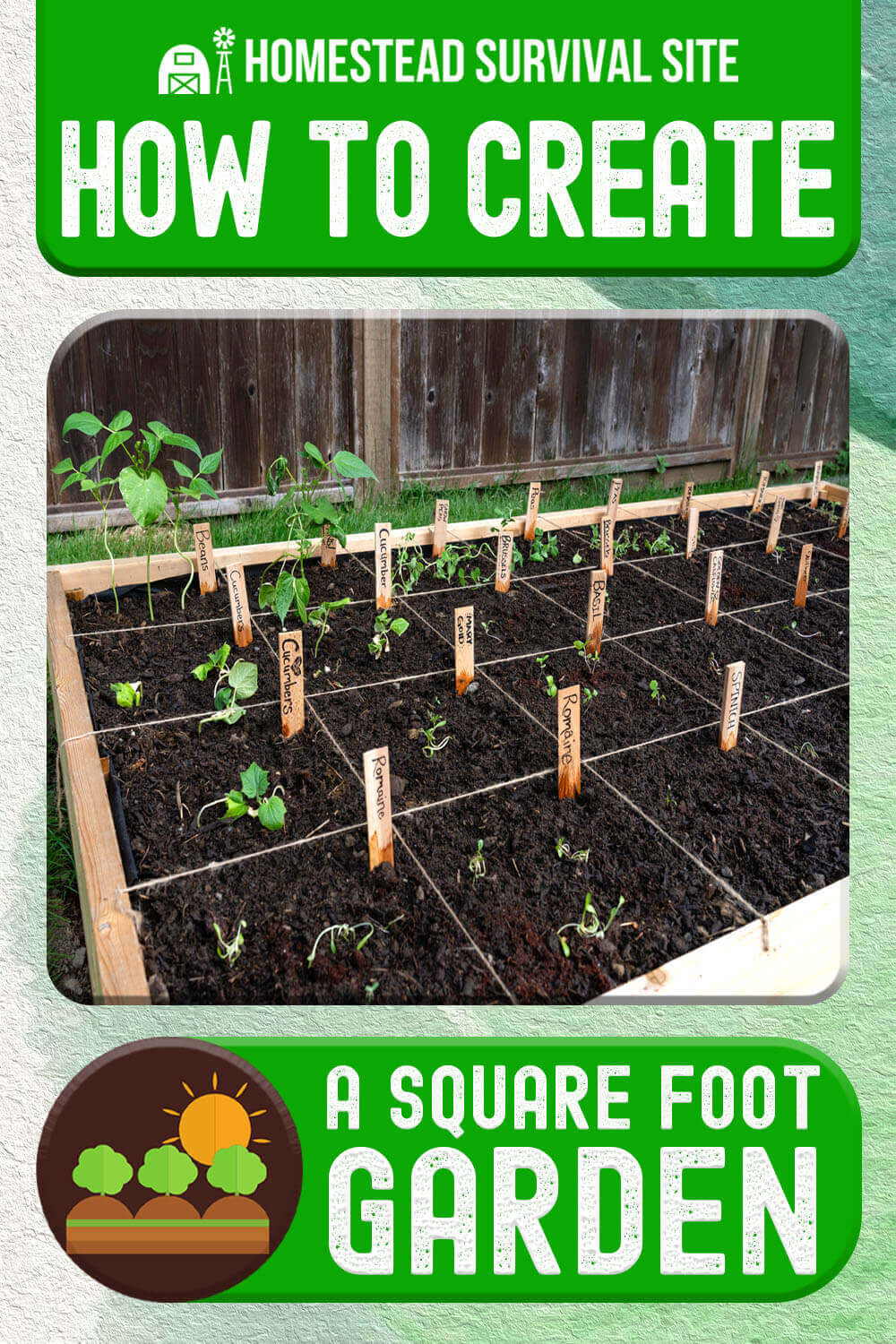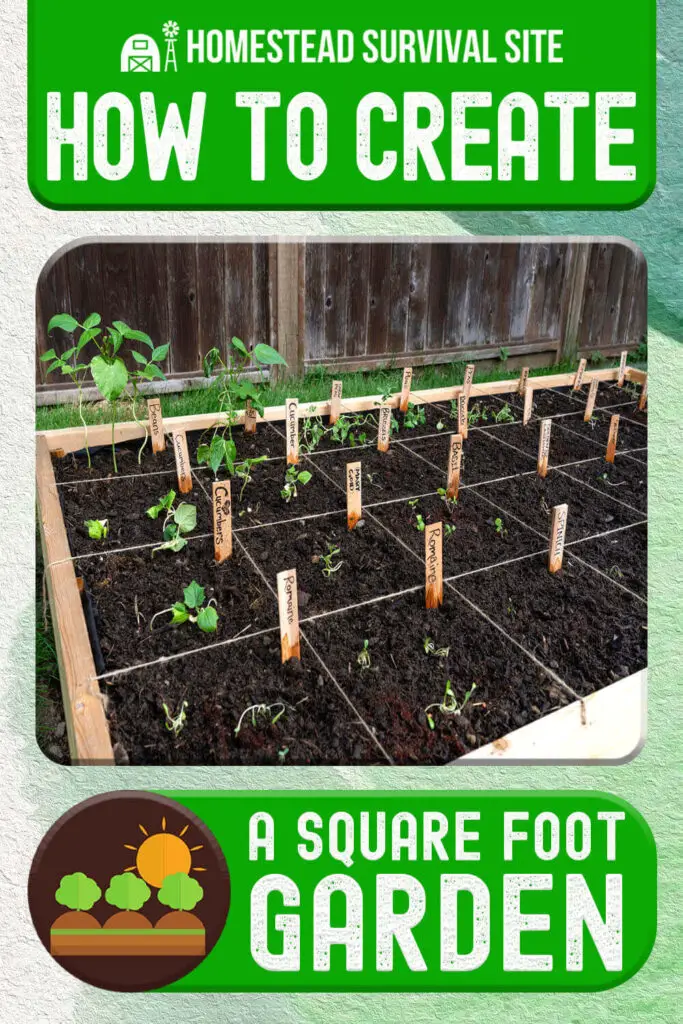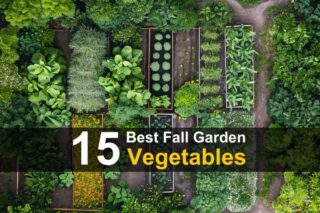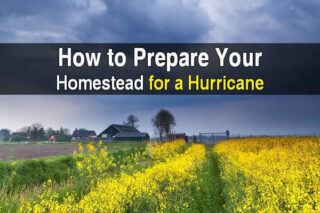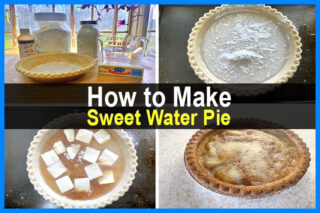Estimated reading time: 11 minutes
Do you have a green thumb, but not enough space to garden? Or maybe you live in an apartment and don’t have access to a yard.
No problem! You can create a square foot garden right on your patio or balcony. In this blog post, we will show you how to do it. So get ready to start growing your own food!
What is a Square Foot Garden?
A square foot garden is a type of gardening in which plants are grown in small square units, typically measuring one foot by one foot. This type of gardening can be done in a traditional garden bed or in a container, such as a raised planter box.
Square foot gardening is an efficient way to maximize space and ensure that each plant has enough room to grow. It also simplifies the process of planting and caring for a garden, as each square can be assigned to a specific plant or group of plants.
For example, one square might contain a single tomato plant, while another might be devoted to herbs. Square foot gardening is a great option for beginners and experienced gardeners alike.
Want to save this post for later? Click Here to Pin It On Pinterest!
How to Plan Your Square Foot Garden
One way to get the most out of your gardening space is to plan a square foot garden. This type of garden is based on dividing your growing area into one-foot square sections, making it easy to keep track of what you’re planting where.
You can also easily customize your garden layout to suit your needs, whether you’re looking to grow a particular type of plant or maximize your yield. When planning your square foot garden, there are a few things to keep in mind.
First, you’ll need to choose the right location for your garden. Make sure you have enough sunlight and access to water, and avoid areas that are prone to flooding or soil erosion.
For each square, you can plant one large plant, several medium-sized plants, or a small number of larger plants. You can grow just about any kind of plant in a square foot garden (with the exception of large, sprawling crops – we’ll talk in more detail about this below).
How to Build a Square Foot Garden
Ready to enjoy your own square foot garden? Here are some tips to help you be successful.
1. Building the Bed
You can start marking out your garden bed using a string line and stakes for borders. To create a 1×1 square foot grid, divide your chosen plot into rows that run lengthwise down the garden bed and columns that are perpendicular to the rows.
Each square should be about 4 inches high if possible, with space in between for appropriate drainage and airflow.
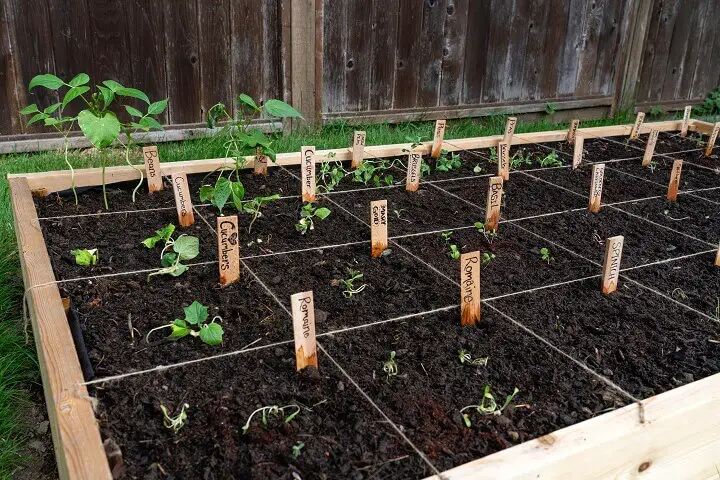
When building your square foot garden, you’ll need the following materials:
- Two boards, 2’x6’ wide and high, and however long you want, depending on the size of your square foot garden.
- A box of wood screws
- A power drill
- Some recycled newspaper or cardboard
- Soil mix (more on this below)
- Small nails and string to make the grid
- A cart for mixing your soil (unless you buy premade mix)
- Basic gardening tools, like a garden hose, rake, and shovel
To build your beds, measure and cut them to sections. Pre-drill three holes on one of the board’s ends, then position them, end to end, to create a square. Screw them together.
What Type of Wood to Use?
There are many different types of wood that can be used to construct a square foot garden.
Some of the most popular choices include cedar and redwood, which are both naturally rot-resistant and offer good drainage and airflow. Other options include pressure-treated pine or hardwoods like ash, maple, or birch. Most gardeners recommend against using pressure-treated wood since it is treated with chemicals that could leach into your soil.
Ultimately, the choice will depend on your needs and your budget, as some types of wood tend to be more expensive than others.
2. Getting the Beds into Position
Once your beds are built, you can slide them into position.
You may need to do some prepwork first. Trim the grass as low as you can, then put the boxes atop the area you’d like to eventually plant. Lay down a thick layer of cardboard (or newspaper). This will kill any remaining grass and will decompose naturally over time, helping to kill any weeds that might still be growing in your garden beds.
3. Using and Creating the Right Soil Mix
Once your beds are in place – and those weeds are killed! – it’s time to create the ideal soil mix that will both support and nourish your developing plants.
You can buy soil mix from the store and save yourself some work, but this can be expensive. An easier option is to make your own. Here are some of the most common ingredients used in soil mixes – use equal parts of each for the best results.
Compost
By adding compost to your garden, you are essentially adding organic matter that will help to improve the quality of your soil. This in turn will lead to healthier plants with deeper roots. Compost can help to improve drainage in heavy clay soils and increase moisture retention in sandy soils. It can also help to suppress plant diseases and pests.
Peat Moss or Coconut Coir
Peat moss has a high absorbency rate, which makes it useful for retaining moisture in the garden. In addition, peat moss is relatively rich in minerals and other nutrients, which can help to improve the quality of the soil.
Peat moss also has a high cation-exchange capacity, which means that it can help to regulate the pH level of the soil.
Then there’s coconut coir. Coconut coir is a natural by-product of the processing of coconuts, and it is made up of the fibers from the husk of the coconut. Coconut coir is an environmentally friendly alternative to peat moss, and it has a number of advantages over peat moss.
First, coconut coir is much more absorbent than peat moss, so it can hold more water and nutrients. In addition, coconut coir is less likely to compact or become matted down, which can happen with peat moss. As a result, coconut coir provides better aeration and drainage for roots. Finally, coconut coir is pH-neutral, so it will not affect the soil's acidity levels.
Vermiculite
Vermiculite is a great addition to any garden. It is light and porous, so it helps aerate the soil and improve drainage. Vermiculite also holds moisture well, so it can help to keep plants hydrated. In addition, vermiculite is rich in minerals and nutrients, which can promote plant growth. It is also lightweight and easy to handle, which makes it ideal for use in raised beds and container gardens.
Vermiculite is an inexpensive way to improve the health of your garden, and it is readily available at most garden centers.
4. Fill the Beds With Soil
Once your soil is properly mixed, it’s time to add it to the beds. As you add it, be sure to wet it down with your hose several times. You want the beds to be thoroughly saturated when you’re filling them, since it will settle over time.
5. Add the Grids
After you add the soil to the beds, divide it up into one-foot sections. You can add a permanent grid with wood laths or dowels. Even mini blinds can be repurposed to create these sections. Use the string and nails to measure out and mark your individual sections as you work.
6. Plant the Grids
Now it’s time to plant! Plan out your garden before you add your plants so that you aren’t just planting willy-nilly and instead, everything has a preset place.
Tips for Growing in a Square Foot Garden
There are many benefits to growing plants in a square foot garden. This method of gardening creates less waste, since you can fit more plants in one small space – however, there are some tips you’ll want to follow.
Space Properly and Consider the Shade
By planning your garden layout carefully, you can make the most of the limited space and ensure that your plants get the sunlight they need. When spacing your plants, be sure to allow for proper air circulation to prevent disease.
Also, consider the sun exposure. Make sure taller plants aren’t shading short ones. The best way to do this is to consider the mature height of each plant.
If you live in an area with harsh summers, consider planting heat-loving vegetables such as tomatoes and peppers in the sunniest spot in your garden.
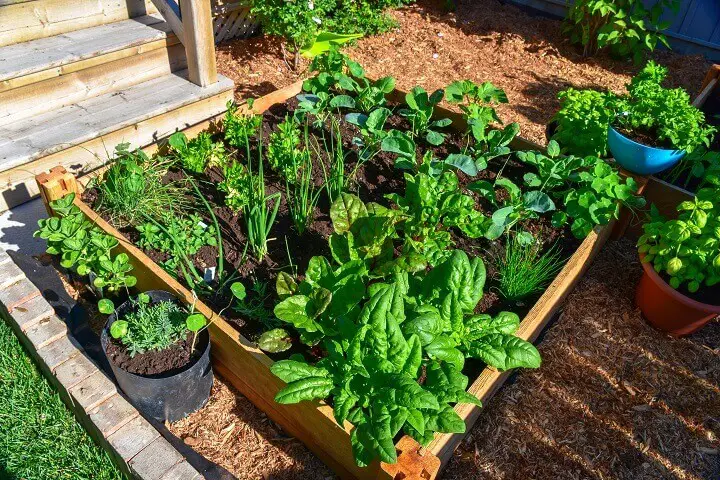
Make Sure You Mulch
Mulching is an important gardening technique that can have numerous benefits, especially in a square foot garden. By placing a layer of mulch around your plants, you can help to suppress weeds, conserve moisture, and even improve the fertility of your soil.
One of the most popular mulches for square foot gardens is straw, which is readily available and easy to spread. Another option is wood chips, which break down slowly over time and provide your plants with a steady supply of nutrients.
No matter what type of mulch you choose, be sure to apply it thickly and evenly to get the best results.
Grow Vertically
In a square foot garden, space is limited, so it's important to make the most of the vertical space available. One way to do this is to install a trellis or other support structure for climbing plants.
Vines can quickly cover a trellis and provide shade or privacy, while still allowing light to reach lower-growing plants. Another option is to plant dwarf varieties of fruit trees or tomato plants.
These varieties are bred to stay small, making them perfect for small spaces. By growing vertically, you can make the most of your square foot garden and create a thriving and productive space.
Extend Your Growing Season with Garden Fabric
Garden fabric creates a protective barrier around your plants, which helps to shield them from the elements and extend the growing season. This is particularly helpful for areas with harsh climates or erratic weather patterns.
By using a layer of garden fabric when planting your seedlings, you can protect their delicate roots from extreme temperatures, heavy rain, and strong winds. Not only will this ensure that your plants are able to thrive throughout the entire growing season, but it will also help you achieve higher yields as well.
Manage Those Weeds
Weeding is one of the most challenging aspects of maintaining a square foot garden. Because there are often more plants in this type of garden than in a conventional one, weeds have many more places to take root and flourish.
In order to effectively manage weeds in such a garden, it is important to use a combination of strategies:
- First, adequate spacing between plants will limit weed growth by preventing these unwanted plants from spreading out and taking up too much space.
- Additionally, mulching is essential for conserving soil moisture and preventing light from reaching weed seeds in the ground.
- Finally, regular maintenance such as pulling smaller weeds while they are still small can help keep larger weeds at bay.
Keep Amending the Soil
One of the best things about square foot gardening is that it is relatively low maintenance. Once you have planted your seeds or seedlings, you can simply sit back and let nature take its course.
However, if you want to ensure that your plants continue to thrive, it is important to continue to amend your soil on a regular basis.
Adding compost or other organic matter will help to keep the soil loose and improve drainage, while also providing essential nutrients for your plants.
What Are the Challenges of Square Foot Gardening?
Although this method offers many advantages, such as increased efficiency and flexibility, there are also certain challenges that come with square foot gardening.
For one thing, because all of your plants are confined to small spaces, it can be difficult to find room for all of the different types of plants that you might want to grow. Since each square is relatively small in size, there is often less soil available to provide nutrients and support for growing plants.
Finally, managing multiple square gardens over large areas can be a bit labor-intensive, requiring time and energy to consistently water and tend to each square. For that reason, most people who have large, expansive gardens prefer to use other methods of growing the vegetables they need.
While these challenges may seem daunting at first glance, with careful planning and some creative solutions they are certainly conquerable. In fact, many people would argue that the benefits of square foot gardening far outweigh the challenges!
Give it a try today – and enjoy everything that it has to offer.
Like this post? Don't Forget to Pin It On Pinterest!

